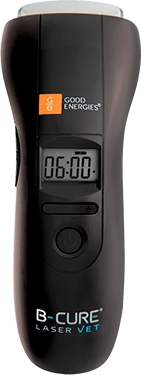Facial Paralysis in Dogs: The Latest Treatments and Techniques for a Speedy Recovery
Facial paralysis in dogs is a condition where there is a loss of movement in the muscles of the face. This can result in drooping of the eyelids, drooling, and difficulty eating and drinking. There are a variety of causes of facial paralysis in dogs, including trauma, infection, and neurological disorders. Fortunately, with the latest treatments and techniques, a speedy recovery is possible.
Understanding Facial Paralysis in Dogs
Facial paralysis in dogs can occur suddenly or develop gradually over time. The most common cause of sudden facial paralysis is trauma, such as being hit by a car or suffering a head injury. The gradual onset of facial paralysis can be caused by a variety of factors, including ear infections, tumors, and neurological conditions.
Symptoms of facial paralysis in dogs can vary depending on the severity and location of the paralysis. Some common symptoms include drooping of the eyelids, drooling, inability to close the mouth or blink, and difficulty eating and drinking. In severe cases, facial paralysis can affect a dog’s ability to breathe properly.
Diagnosing Facial Paralysis in Dogs
If you suspect that your dog is suffering from facial paralysis, it is important to seek veterinary care immediately. Your veterinarian will perform a thorough physical exam and may recommend additional diagnostic tests, such as blood work, x-rays, or an MRI.
Treatment Options for Facial Paralysis in Dogs
The treatment of facial paralysis in dogs will depend on the underlying cause of the condition. In some cases, such as those caused by ear infections or trauma, medication or surgery may be necessary to resolve the underlying issue and restore movement to the facial muscles.
Low-level laser therapy (LLLT) is a promising treatment option for dogs suffering from facial paralysis. LLLT uses a combination of red and infrared laser wavelengths to penetrate the skin and stimulate the body’s natural healing processes. This can help to reduce inflammation, promote tissue repair, and improve circulation in the affected area.
Bcure Laser Vet for Facial Paralysis in Dogs
Bcure is a company that specializes in LLLT devices for both home and veterinary use. Their Bcure Laser Vet device is specifically designed to treat facial paralysis in dogs. The device is easy to use and can be used in the comfort of your own home, under the guidance of your veterinarian.
The Bcure Laser Vet device uses a combination of red and infrared laser wavelengths to penetrate the skin and stimulate the body’s natural healing processes. This can help to reduce inflammation, promote tissue repair, and improve circulation in the affected area. The device is safe and painless, making it an ideal treatment option for dogs suffering from facial paralysis.
Using the Bcure Laser Vet Device
Once you have received the Bcure Laser Vet device, it is important to read the instructions carefully and follow the recommended treatment plan for your dog’s specific condition. Your veterinarian can help you develop a treatment plan that is tailored to your dog’s needs.
The Bcure Laser Vet device is easy to use and can be applied directly to the affected area of the face. The device is held against the skin for a few seconds at a time, and the treatment can be repeated several times a day as recommended by your veterinarian.
In addition to using the Bcure Laser Vet device, your veterinarian may recommend other treatments to help manage your dog’s facial paralysis. This may include medication, physical therapy, or surgery, depending on the underlying cause of the condition.
Benefits of Using the Bcure Laser Vet Device
One of the main benefits of using the Bcure Laser Vet device to treat facial paralysis in dogs is the ability to provide treatment in the comfort of your own home. This can help to reduce stress and anxiety for your dog, while also saving you time and money on trips to the veterinarian.
The Bcure Laser Vet device is also a non-invasive and painless treatment option for facial paralysis in dogs. The device uses low-level laser therapy, which means it does not cause any discomfort or harm to your dog’s skin or tissue.
Additionally, the Bcure Laser Vet device has been clinically proven to be effective in treating a variety of conditions in dogs, including facial paralysis. The device is also easy to use and comes with clear instructions on how to properly administer treatment to your dog.
Furthermore, using the Bcure Laser Vet device for facial paralysis in dogs can also help to reduce inflammation and promote tissue repair, which can lead to a faster recovery time for your pet. It can also help to improve circulation in the affected area, which can lead to better nerve function and a reduction in symptoms.
Overall, the Bcure Laser Vet device is a safe, effective, and convenient option for treating facial paralysis in dogs. It provides pet owners with an at-home solution that can help to improve their pet’s quality of life and aid in a speedy recovery. However, it’s important to always consult with your veterinarian before starting any new treatment regimen for your dog.
Bottom Line
Facial paralysis in dogs can be a distressing condition for both pets and their owners. However, with the latest treatments and techniques available, such as the Bcure Laser Vet device, there is hope for a speedy recovery.
It’s important for pet owners to consult with their veterinarian and follow the recommended treatment plan, which may include a combination of medications, physical therapy, and laser therapy. The Bcure Laser Vet device is a non-invasive, painless, and clinically proven treatment option that can be used in the comfort of your own home, reducing stress and saving time and money on vet visits.
By using the Bcure Laser Vet device, pet owners can help to reduce inflammation, promote tissue repair, and improve nerve function, leading to a faster recovery time for their furry friend. The Bcure Laser Vet device is an effective and convenient option for treating facial paralysis in dogs, but it’s important to always consult with your veterinarian and follow their guidance.
Overall, with the latest treatments and techniques available, there is hope for dogs suffering from facial paralysis to regain their quality of life and live happily and healthily.




